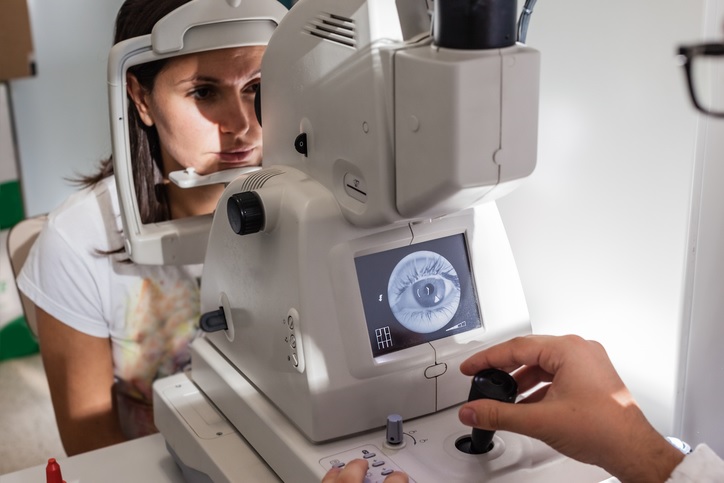By Suzanne LaKamp, OD, FAAO

Dec. 6, 2017
Providing great patient care, and service, is half the equation in growing a practice. The other half is motivating satisfied patients to refer friends and family. Word-of-mouth, whether face-to-face, or on social media, is the best way to help your practice thrive.
My shared OD-MD, mostly surgical, practice is located in a prosperous suburb outside Kansas City, Kan. We have three MDs and two ODs on staff, and pride ourselves on being on the leading edge of new technology and treatment options.
Up to 50 percent of the comprehensive new patient exams we see are family referrals from existing patients.
Measure to Improve
You need to know where patients are coming from before you can work toward increasing referrals. In my practice, new patients complete forms before the exam which include demographics and health history, and also include a question on how the patient found the practice, and if referred, who referred the patient. The practice keeps track of these referrals to see how best to budget for advertising, including how best to encourage referrals. Our top sources of new patients are: local radio ads, social media and word-of-mouth, in that order.
Online reviews play a large part in fueling our patient volume. Many patients do research before scheduling an appointment at any practice. If a patient schedules a visit after reading a positive review, we count it as a self-referral. If a patient is scheduled after a brother or parent recommended the practice, that would be counted as a patient referral.

The family discount plan at Dr. LaKamp’s practice encourages referrals of friends and family, which she says, is the key to practice growth. Pictured here is a postcard the practice sends to patients.
Survey Patients to See if Stage is Set for Referrals
We monitor patient experience through weekly patient surveys. The marketing department also sends out more detailed quarterly surveys, and will analyze the information to see if improvements are needed.
For instance, too many patients noting long wait times would indicate a need to change how patients are flowed through the office, or many patients expressing dissatisfaction with the amount of time they spent with their doctor would indicate a need to build in more time for exams.
Becoming aware of the parts of the practice where patients are satisfied, and those that need improvement, make it more likely you can deliver the kind of experience that results in referrals.
Ask for Online Reviews
We encourage patients to post reviews online and on our Facebook page. When we e-mail patients our satisfaction surveys, we also include information about how to post reviews, and a request that they do so. There is no compensation for posting a review in our practice, but we try to always kindly ask for patients to share their positive experience in a review.
Ask About Patient’s Family in Exam Room
In the exam room, I will often ask how the patient’s family is doing, keeping the conversation open-ended. Patients often will ask about getting a loved one an eye appointment. I also take note, and follow-up on, patient’s family’s comments about wanting to have vision correction. For family members who express interest in surgery, we offer a family plan program with a discount for multiple members of the same family who receive surgery from one of the MDs in my practice.
Doctors or staff will direct interested patients to specialized patient counselors that work in our practice as customer, or patient, relations reps. The counselor determines the patient need and appointment type.
In addition, we send postcards to patients with reminders to refer friends and family who are in need of eyecare.
Patients often bring family to eye exams due to needing a driver during surgery post-op checks, help after dilation, or for extra support. It is mandatory that the patient have a driver if undergoing any procedures. It is extremely important to acknowledge the family when taking care of a patient. I encourage our patients to feel comfortable bringing along family, or anyone else they would like for the exam. Family members, friends, or work colleagues, who observe great eyecare delivered will quickly schedule their own exams.
Consult State Laws Before Rewarding for Referral
When considering gifts or discounts, each practice should consider federal and state laws. Cash-pay practices that do not submit claims to Medicaid and Medicare do not have to worry about anti-kickback laws.
But many states have statutes about kick-backs and fee splitting in which there can be no compensation for referring a patient. Each practice must check with their state association, as well as consult with attorneys when it comes to gifting or discounts.
 Suzanne LaKamp, OD, FAAO, is an associate at Durrie Vision in Overland Park, Kan. To contact: dr.suzanne.lakamp@gmail.com
Suzanne LaKamp, OD, FAAO, is an associate at Durrie Vision in Overland Park, Kan. To contact: dr.suzanne.lakamp@gmail.com


























